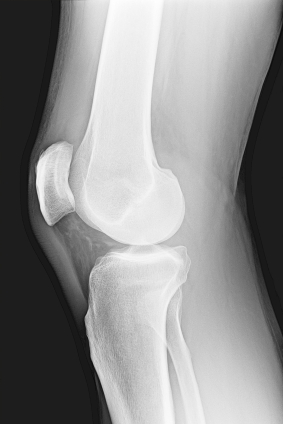Understanding the medial meniscus
Young athletes suffer a variety of athletic injuries throughout their career, including many to the knee. ACL tears are a commonly reported and understood injury sports phenomenon, particularly among female athletes. The loading and rotating of the knee into improper alignment affects a group dubbed "The Unhappy Triad," which is comprised of the:
- ACL (Anterior Cruciate Ligament) in the middle of the knee;
- MCL (Medial Collateral Ligament) on the inner half of the knee; and
- Medial Meniscus (cup like structure that provides cushioning for all movement).

When an ACL injury occurs, the MCL and Medial Meniscus may also suffer damage. Because the MCL has a good blood supply, it will often heal without the need for surgical repair. A torn meniscus is not as lucky, lacking good circulation like the MCL.
Surgeons will commonly shave and remove a torn meniscus in adults, but in younger populations doctors will attempt to save it. Younger patients are more likely to heal and a future of high impact sporting activities necessitate saving the meniscus where possible. The chance for a meniscus to heal properly with surgical interventions is critical to reduce "wear and tear" injuries in the future.
Let it heal
Athletes have a tendency to "push the limits" when it comes to rehabilitation, but going against physician guidelines for a meniscal repair is reckless. The repaired meniscus can easily be torn with only small amounts of pressure. This means that attempting to walk (against physician recommendations) at only a couple of weeks can result in a re-tear. Unlike the ACL, which is drilled into the bone forming a very strong structure, a torn meniscus is pieced back together without the same support. Bending the knee fully, loading too much weight, or planting and rotating the leg can easily re-tear the meniscus . This could mean another surgery to remove the torn piece, further delaying a return to sports.
Why following doctor's advice is important
Athletes must always follow a physician's recommended rehabilitation program after any surgical procedure, but this particular injury is commonly pushed past the limits by patients. Knowing the facts about the injured structures, appropriate time frames for healing, and what is reasonable in returning to sporting activities is very important for athletes, parents, and coaches. The following are the FOUR most important reasons why athletes must adhere to physician recommendations for meniscal repairs:
-
No second chances: A re-torn meniscus will not likely be salvaged. This means athletes have one chance to allow full healing. Tearing the meniscus again during the early stages of rehab destroys the chances of the structure ever fully healing.
-
Pushing early does not lead to faster recovery: Physicians will often recommend that athletes not fully weight bear or completely bend a meniscus repair for 6 weeks. During that time, athletes will be on crutches 24/7. USE THEM...DON'T CHEAT! Thinking that walking sooner will get an athlete back to sports is a mistake. Most athletes will not return to sports-specific rehabilitation exercises for 3-4 months. Keeping off the leg for the first six weeks will not slow down process. Young athletes heal well. Trying to speed up the process will only compromise the surgical procedure.
-
Better with than without. If a meniscus is repaired and allowed to heal, rehabilitation and general attitude should be focused on the future. A healthy meniscus absorbs shock, reducing the compression forces through the knee. The loss of this structure can increase the wear and tear on cartilage. If there is an opportunity to save a meniscus, play it safe to maximize the chances of success.
- May give athletes an edge. The meniscus is not only a shock absorber for every athletic movement, but also provides subtle information that tells the brain where the knee is without looking at it. This system, called prioprioception, is what allows athletes to make great plays effortlessly. This is not to say having the meniscus removed will significantly impact athletic ability, but it can only be an advantage if salvaged.
As always, an athlete needs to follow the doctor's recommendations for physical therapy following surgery. The guidelines are based on hundreds of thousands of surgical procedures to maximize chances of success. The meniscus is very critical for long term health and wellness and, if salvageable, every opportunity must be given to ensure that it is given time to heal.
Keith Cronin is a physical therapist in the St. Louis area and a MomsTeam expert.
Created November 5, 2010, updated January 4, 2012








